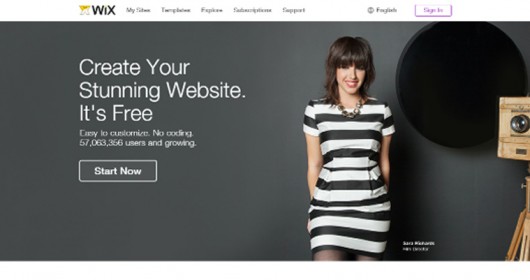8 Important UX Design Tips for UX Designers

Websites are becoming the supporting pillars for any business, they can be used to convey information, marketing the products, improve sales, reach out to a wider range of public, and many different purposes. These different uses of websites make it an important factor for any business and their maintenance is also quite important.
User experience is used to enhance the website and to create an intuitive environment. This type of environment helps the user to easily use any website, it helps them to navigate through various parts and also keep them hooked to the website and not get bored. Experience design agency often hire UI designer to maintain the interface of their website and create a good environment for all its users.
Knowing the importance of a good website makes it a task to create one with perfect UI and UX, though tedious it is not impossible. Here we have gathered for you 8 tips to improve your UX design and rock the world of websites.
1. Know the requirement of the audience
The first and foremost requirement in any business is knowing the audience. Apps or web pages are all built for the users and it becomes important to understand what they want from a website. This process would require research and observation. As a developer, you can talk with stakeholders and know their style of business. This makes it easier to form communication and create a website that is audience specific.
Understand the target audience, research what they want, look for different websites that gain the attention, look for different styles, this will make the audience happier as all their requirements are met.
2. Think like Users
Understand the challenge from the perspective of a user. If your company hire UI developer, he or she will know all the in and outs of the website. It is important in such a case to put yourself in the shoes of the users and look for any complexities in the design.
Keep in mind that all users are new to the website, check if everything is readily available and the content is readable as well as continuous. Add search bars, help desk, guides, how to index, and many more things that will make
the website easy to use even if the users are verdant.
3. Create responsive design
Gone are the days when websites were just present for conveying information, in today’s time websites must be capable of doing everything. A responsive design will include the cross-platform presence of the website; the presence of the website on desktop, mobile, laptop, tablets, etc. This makes the website more visible and easily accessible.
A responsive website can also include contact information, chatbox, assistant, and many other similar things. Making the website responsive will help the website to increase its SEO index and also improve visibility on the search engines.
4. Iterate the design
Iteration often means taking feedback from the users and stakeholders and making necessary changes to the existing website. As a developer, you can add the feedback section in the website itself to gain more information rather than observing or conducting surveys.
Iteration can also take place on designs as you can change the design as per the recent trend, add new features to enhance user experience. In short, the website must be continuously observed and updated to give all the current and precise information to the user.
5. Use different types of scrolling techniques
Often websites have long information that needs to be conveyed to the users, in such a situation it becomes important to keep the users in place and not bore them with the myriad of contents present. To make the website more interactive you can use different scrolling techniques.
The scrolling can involve continuous scrolling or sidewise scrolling to keep the content readable and continuous. Avoid using clicks on the page as it makes navigation difficult and slower as well. For an interface with multiple contents and lesser descriptions, continuous scrolling can be used, while for more information and less visual content use sidewise scrolling to keep the information continuous and readable.
6. Use different texts format
To further enhance the interaction of the website use interactive fonts and text format. This can include bold texts in certain portions, smaller texts for contact, contrast color for descriptions, and other such changes.
These changes will keep the users engaged and make the content more engaging and attractive to look at. Good typography automatically elevates the UI design of the website. The use of various forms of texts allows you to emphasize certain information and make it easier for users to read the information.
7. Trial and error
It can be a risky decision to directly launch a product before testing it. This problem can cause huge problems after the launch and it can be difficult to maintain the website. To avoid this a developer must always work on making a prototype to look at the end product and check for any errors or discrepancies.
This helps in understanding the problems easily and forming solutions to the problem. The prototype can be tested by a few users and feedback can be taken to further enhance the product design. This method keeps the entire process in check and allows the developers to process small errors at a time and does not stack all the errors in a single time.
8. Focus on content
The most important part of the website remains the content. If the website cannot deliver the message across the users it will soon lose its importance and people will eventually lose their interest. So, make sure to add precise and adequate information. This can also involve adding graphics, animations, and other such features to easily cover your information to the user.
Keep the website to the point and remove all the extraneous information. Add all the relevant information and link various information to the content to get easier access and reduce the time for search for the content.
Wrapping Up
Ultimately, UX design and a perfect user interface will not be set in a single day and will require continuous efforts to create a good experience. When developing a website make sure to add all layout and formats suitably, remove redundant information, and add graphical content to deliver your message.
If you are getting started with UX design use the tips that are mentioned above, this will help you create a good user experience. Start step by step and check for any kind of error or problems. Solve each problem and at the end of the day, you will know how and what to apply to create a good interface for the users.
Subscribe & Get E-Mail Updates Delivered
Our informative Design related articles featuring the latest Resources for Web Designers & the Web get delivered via email dialy. Thousands of readers have signed up already. Why don't you subscribe as well, and get articles delivered to your inbox?






Leave a Reply